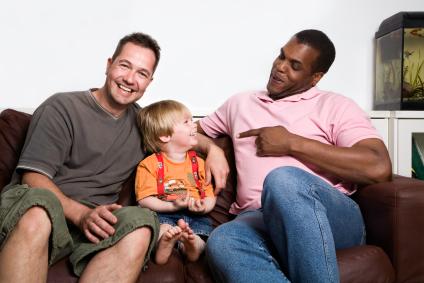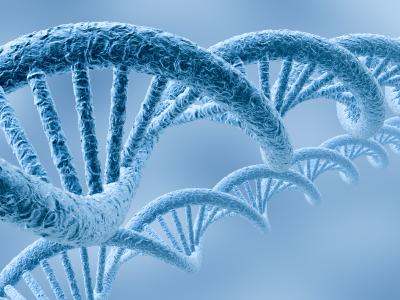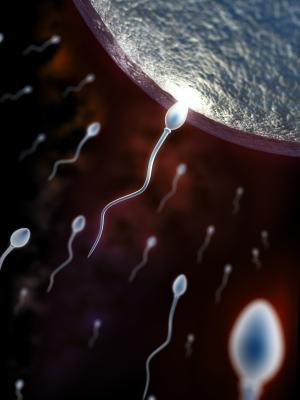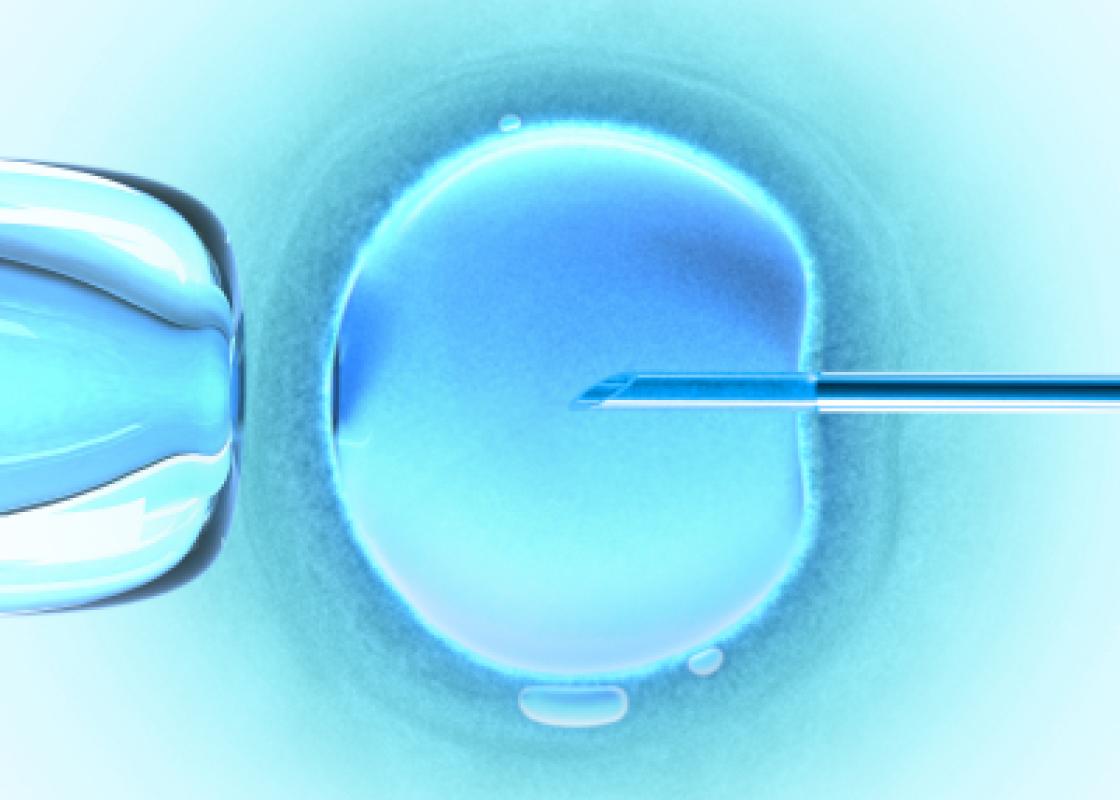New knowledge on reproduction and genes doesn’t just make it easier to have children or identify diseases. It also changes our cultural perceptions of body, reproduction and kinship. But in what way? The research group Biotechnology and reproduction at NTNU has looked into this question.
The trickster
Who should be entitled to artificial insemination, and why? Kristin Spilker has taken a closer look at two central documents that affect Norwegians’ personal life: The family report of the Bondevik II administration and the Biotechnology Act of 2003 have had consequences beyond what was intended. Spilker uses the American professor Donna Haraway’s metaphor of the trickster in order to explain.
The trickster is a mythical character that exists all over the world. In Norway he is represented by for instance the Old Norse God Loke, or the fairytale character Mikkel Rev.
– The trickster is a character who knows what he is doing and why he is doing it, but who doesn’t always control the outcome of his actions, Spilker explained. The trickster’s actions may have consequences beyond what was expected and cause turbulence and instability.
– I want to point out two trickster characters spawned by Norway’s policy for biotechnology, the researcher said. One is how the Biotechnology Act limits fertility treatment to heterosexual couples – the policy is to create families of a particular order: Mother, father and one or more children.
The other trickster is the Bondevik II administration’s Family report, which states that: “The term “family” includes married couples with or without children, cohabitant couples with or without children, homosexual partners with or without children, single parents who live with or without their children, families with foster children, and singles”. (Gov. report no. 29, p. 5 (2002–2003))
– According to this definition the government says that all Norwegian citizens are part of a family, including single people, Spilker pointed out. But the family report is primarily directed at families with children, and not all families are equally “safe” for the children. A couple of pages later the Family report states that: “Having both parents present and living in a committed and lasting relationship helps the child feel safe. This safety is also dependant upon the parents’ sexuality and relationship. A wholesome sexuality that incorporates the psychological, social and biological dimensions and makes up a lasting relation has a positive effect on the children.”
– But what happens when they first state that we are all part of a family, and then claim that some people are not a family, or shouldn’t be allowed to start the family that they can start? Spilker asked.
Not an acceptable family
She talked about her informants Bernt and Ola, the parents of two children conceived in California with the help of an egg donor and a surrogate mother. The surrogate carried the children like they were twins and Bernt and Ola are the biological fathers of one child each.

– In California both children were registered in the passports of both fathers, but upon registration in Norway there was a problem. The National Registry did not allow two male names on the form. The children were registered, but without parents. The authorities suggested that Bernt and Ola should DNA-test the children and assume fatherhood of their individual children so that they later could apply for adoption of the other child. Bernt and Ola did not find this an acceptable solution.
– Here we see how tricksters 1 and 2 work together: The technology that was developed to help heterosexual couples can also be used by other types of families – and it is used, Spilker said. She believes that people who are affected by technology or family laws get creative when they encounter prohibitions. By using the trickster features of the reproductive technology and the term ”family” they create families that both constitute and challenge our traditional understanding of parenthood.
– The Bondevik administration knew what they were doing when they created the law and the Family report, but did they see the consequences? She asked.
– To put it in the words of the social anthropologist Marilyn Strathern, people act the way that they see it is possible to act, Spilker concluded.
Blood and genes
– As the social anthropologist David Schneider writes, kinship in Euro-American cultures is defined by blood; of biogenetic material from the genitor (dad) and the genitrix (mother). And when science discovers new things about kinship it quickly becomes part of our general notion of kinship, said Malin Noem Ravn. She has studied people’s perceptions of gender and genes.
– Blood and genes can often represent the same thing with regard to kinship, but my focus was on how they are different, especially when it comes to individuality. Blood is something we have all seen, we can taste it and smell it and it is strongly connected to life and death, the researcher said. Genes are more technological, more unfamiliar. We know that they are important, but not exactly why.

Noem Ravn has looked at how pregnant women employ ideas of genes when they talk about the baby that they are carrying.
– Genes are important to what and who the women feel that the baby is; experiences during pregnancy are discussed on the basis of genes, the researcher explains. The women believe that the child is genetically unique; a mix of genes from themselves and the child’s father, and therefore not quite like either of them.
– Especially later on in the pregnancy the women say that something must be there from the start – this something is the personality, and the start is the conception, not the birth. Since few believe that the soul stems from God the personality is perceived to lie in the genes, the researcher said. Blood is also seen as important, not for the personality, but as foetal nutrition.
From romance to technology?
– The history of reproduction has gone from being a romance between a man and a woman to being a romance between a sperm cell and an egg cell, said Merete Lie, who headed the research project.

– I am fascinated by the visualisation of tiny parts of our body; private parts that now are turned into public images. Things that used to be visible only through a microscope are now used in advertising, said Lie, and showed a picture from an ad for an insurance company: The race between sperm cells towards the egg cell with the message ”We are the winners!”
But do the pictures present fact or fiction? According to the researcher they are perceived to be something in between.
– Lennart Nilsson’s images of foetuses were presented as something that looks like an astronaut - floating weightless in space. We have later learned that the pictures don’t show the inside of a woman, but aborted foetuses. Pictures of sperm and egg cells are presente in a similar fashion, floating in nothingness, and make us wonder if the colours are real.
The pictures are totally detached from a man/woman context, said Lie. She believed that the reason might be that the presentation of medical technology is a product of negotiations between doctors, journalists, writers and their audiences.
– Conception is not portrayed as a unification of two people but as the unification of two cells. It could just as well take place in a test tube as inside the woman’s body, said the researcher. She felt that the iconic image of conception has become the one that shows the winner entering the egg.
– Our project is now finished, but I am left with a question I would like to share with you: Are we witnessing a de-naturalisation of gendered biological bodies, in the sense that conception no longer happens between a man and a woman but between two cells? Or is it the opposite? A re-naturalisation, in which the creation of a child is a biological process involving cells, and that these cells don’t need to be inside a human body, asked Merete Lie.
Debate

The final debate at the conference dealt with the policy regarding who deserves help to conceive a child. All parties to the political debate spoke of the interests of the child, but what is the second most important thing? Is it to ensure that everyone who wants a family can have one, or is it perhaps equal treatment – of women and men, heterosexuals and homosexuals and/or of egg and sperm cells? The Norwegian biotechnology act separates between eggs and sperm in the sense that donating sperm is allowed whereas donating eggs isn’t. If this is a discriminatory practice, who are being discriminated against – men with barren partners who don’t get the chance to become the biological father of a child, or barren women who don’t get the chance to become pregnant?
It was pointed out that the heterosexual norm is reconstructed in the law also after homosexual couples get the right to have children: Why can’t two friends get an artificial insemination? Kristin Spilker and Malin Noem Ravn believe that this has to do with the fact that sexual intercourse is the basis of reproduction: The idea is that sex creates a bond that keeps the family together, even when sex doesn’t lead to conception, as in the case of infertility or homosexual practice.
The American social anthropologist Marcia Inhorn addressed the problems that arise when each country can make its own biotechnology laws. Reproductive tourism has become a concept since it is possible to buy an egg in one country, sperm in another and inseminate a poor woman in a third country – before the affluent parents take their newborn child home to country number four, where the biotechnology laws might be stricter than in the other three countries.
Translated by: Vigdis Isachsen
The research group held its final conference at NTNU on June 2. In addition to the members of the research group social anthropologist Marcia Inhorn, professor at the University of Michigan and professor II at the Centre for Women and Gender Research, UiB, and Arne Sunde, head of section at the fertility clinic at St Olavs Hospital and professor at NTNU, spoke at the conference.
In the final panel debate participated also professor Berit Schei from the Department of Public Health and General Practice and associate professor Berge Solberg, coordinator for the Bioethics Research Group at NTNU.
The project has studied cultural changes connected with new reproduction technology within NFR’s research programme on Ethics, society and biotechnology.
The research group consisted of three social anthropologists: professor Merete Lie (project leader), post.doc. Malin Noem Ravn and PhD student Kristin Spilker.
